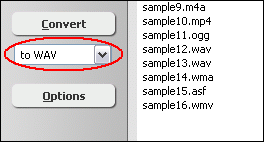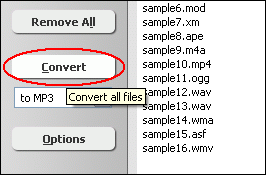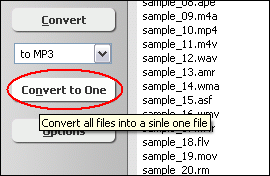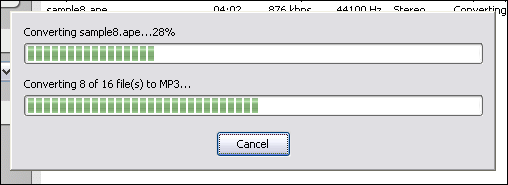WAVE64 to WAVConvert WAVE64 to WAV in Batch, WAVE64 to WAV Converter |
 |
| Home | Getting Started | Download | Buy Now! | Screen Shots | FAQ | Support | Contact |
Total Audio MP3 Converter converts WAVE64 to WAV. The software is an ALL-IN-ONE audio converter that supports more than 150 audio and video files. Total Audio MP3 Converter supports batch conversion and is full compatible with Windows 10/8/7.
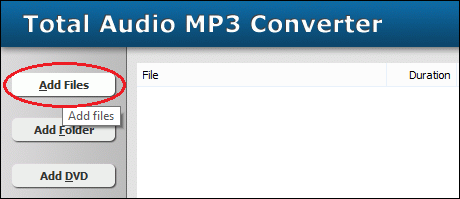 Click on "Add Files" to choose WAVE64 files and add them to conversion list. 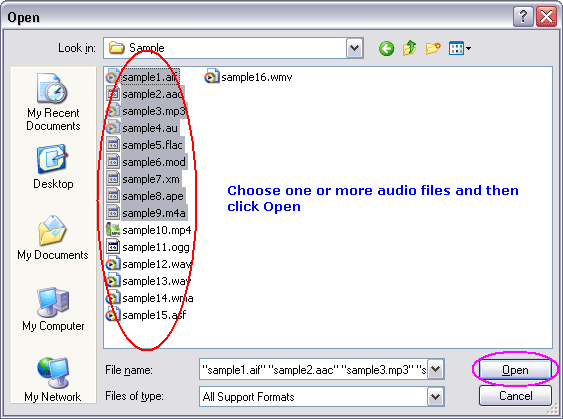 Choose one or more WAVE64 files you want to convert and then click on Open. 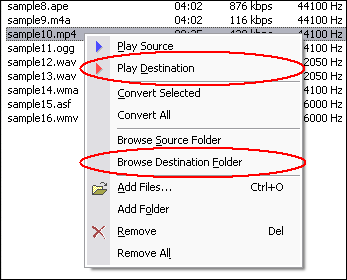 Right-click converted item and choose "Play Destination" to play the destination file, choose "Browse Destination Folder" to open Windows Explorer to browse the destination file. Total Audio MP3 Converter is 100% clean and safe to install.
It's certified by major download sites. What is WAVE64? The Sony Wave64 file format is defined as a true 64 bit file format that allows to overcome the limitations of the RIFF/WAVE format. The file format was originally defined by Sonic Foundry. In Summer 2003, Sony Pictures Digital acquired Sonic Foundry's Desktop Software assets. Since then, the new format is officially promoted as Sony Pictures Digital Wave 64. Companies are encouraged to support this format and no royalties have to be paid to use it. The Sony Wave64 file format is very similar to the well known RIFF/WAVE format. Therefore, existing software implementations of RIFF/WAVE file filters are likely to be extendable to support the Sony Wave64 file format with little programming effort. Because of the similarities to the RIFF/WAVE format, only the differences between these formats are described. It is assumed that the reader is familiar with the original format as defined by Microsoft. What is WAV? Both WAVs and AIFFs are compatible with Windows, Macintosh, and Linux operating systems. The format takes into account some differences of the Intel CPU such as little-endian byte order. The RIFF format acts as a "wrapper" for various audio compression codecs. Though a WAV file can hold compressed audio, the most common WAV format contains uncompressed audio in the linear pulse code modulation (LPCM) format. The standard audio file format for CDs, for example, is LPCM-encoded, containing two channels of 44,100 samples per second, 16 bits per sample. Since LPCM uses an uncompressed storage method which keeps all the samples of an audio track, professional users or audio experts may use the WAV format for maximum audio quality. WAV audio can also be edited and manipulated with relative ease using software. The WAV format supports compressed audio, using, on Windows, the Audio Compression Manager. Any ACM codec can be used to compress a WAV file. The UI for Audio Compression Manager may be accessed through various programs that use it, including Sound Recorder in some versions of Windows. Beginning with Windows 2000, a WAVE_FORMAT_EXTENSIBLE header was defined which specifies multiple audio channel data along with speaker positions, eliminates ambiguity regarding sample types and container sizes in the standard WAV format and supports defining custom extensions to the format chunk. WAVE64 to WAV Related Topics: DIF to WAV, DIVX to WAV, DV to WAV, H263 to WAV, H264 to WAV, HDTV to WAV, KAR to WAV, MPG to WAV, MPGA to WAV, MTS to WAV, MTV to WAV, MVI to WAV, QCP to WAV, QT to WAV, RA to WAV, RAM to WAV, RM to WAV, RMI to WAV, TS to WAV, ULAW to WAV, VCD to WAV, VFW to WAV, VID to WAV, AC3 to WAV, ADX to WAV, AMR to WAV, MTM to WAV, OGG to WAV, S3M to WAV, SND to WAV, SPX to WAV, MOV to WAV, MP2 to WAV, MPA to WAV, VOB to WAV
|
| Home | Getting Started | Download | Buy Now! | Screen Shots | FAQ | Support | Contact | Links |
| Copyright © 2006-2017 Hoo Technologies All rights reserved. Privacy Policy |
